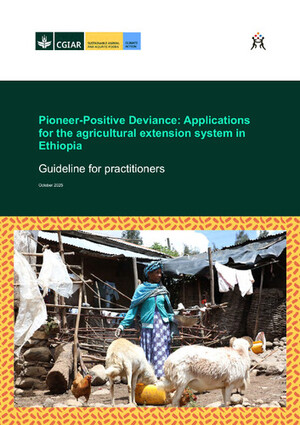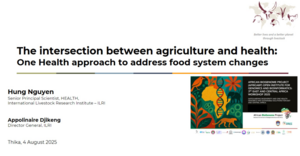
A 1,000-year-old ‘Evolutionary Jolt’ helped African cattle adapt to the continent’s multiple challenges
A new study in Nature Genetics retraced 1,000 years of African pastoralist cattle breeding, identifying how cattle acquired the traits that enabled them to spread throughout the continent
NAIROBI, Kenya (30 Sep 2020)— Scientists sifting through the DNA of indigenous African cattle breeds announced today the discovery of a thousand-year-old ‘admixture event’ between the world’s two main subspecies of cattle, helping unveil the genetic history behind the success of African pastoralism.
The event, dubbed an ‘evolutionary jolt’ by one of the scientists, brought together zebu (humped) and taurine (unhumped) cattle in the Horn of Africa some 750-1050 years ago. The resulting crossbreed retained advantages from each subspecies, giving the admixture the ability to adapt to the continent’s diverse and challenging ecosystems.
The findings, published in the October issue of Nature Genetics, emerged from an effort to sequence the genomes of 172 indigenous cattle by scientists at the Nairobi and Ethiopia-based International Livestock Research Institute (ILRI) and Korea’s Seoul National University. They wanted to learn how—after spending thousands of years confined to a shifting patchwork of sub-regions in Africa—cattle rapidly evolved traits during the last millennia that allowed them to spread across the continent.
Today, cattle play a central role in human livelihoods in Africa. For many rural households, cattle are among the family’s most valuable assets. They provide a critical source of protein and micronutrients alongside income to pay for things like school fees. They also provide manure for crops and some African breeds can survive in conditions that can’t support food crops.
But to thrive in Africa’s diverse settings, cattle need an array of traits like heat and drought-tolerance, the capacity to control inflammation and tick infestations, and resistance to devastating livestock diseases like trypanosomiasis. Today’s announcement helps explain how Africa’s cattle acquired such a range of advantages.
All billion or so cattle today descend from ancient aurochs, an extinct species of large wild cattle that once inhabited large swaths of Eurasia. These cattle were domesticated independently during the Neolithic era: once in south Asia, leading to the zebu or humped cattle, and the other in the Middle East, leading to taurine cattle. The taurine were introduced through North Africa some 8,000 years ago but remained largely confined to isolated belts of land in West and East Africa.
The genome sequencing work conducted by the scientists revealed that indigenous pastoralist herders in the Horn of Africa began breeding the Asian zebu cattle with local taurine breeds about a thousand years ago. The zebu offered traits that would allow cattle to survive in hot, dry climates, while the taurine provided cattle with the ability to endure humid climates where vector-borne diseases like trypanosomiasis are common.
“We believe these insights can be used to breed a new generation of African cattle that have some of the qualities of European and American livestock—which produce more milk and meat per animal—but with the rich mosaic of traits that make African cattle more resilient and sustainable,” said Olivier Hanotte, Principal Scientist ILRI and Professor of Genetics at the University of Nottingham (UK).
“We’re fortunate that pastoralists were such skilled breeders,” Hanotte said. “They left a valuable roadmap for efforts underway at ILRI and elsewhere to balance livestock productivity in Africa with resilience and sustainability.”
African livestock experts cautioned that while increasing yields of milk and meat per animal is crucial—especially to avoid expansion of livestock production into sensitive natural habitats—that focus must be combined with an appreciation for the ways cattle have adapted to specifically African environments.
“It’s important to understand that livestock breeding has long played a vital role in sustaining the health and wealth of African communities,” said ILRI Director General Jimmy Smith. “The focus on breeding for resilience that guided past efforts provides a touchstone for future work to chart a sustainable path for livestock production in sub-Saharan Africa.”
For Hanotte’s reflections on the extensive research that informed the paper, see here.



















